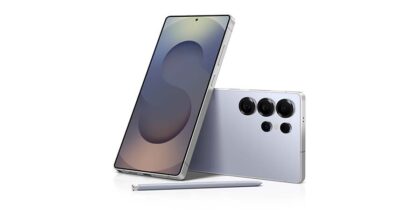Time of flight isn’t just that important piece of information on your boarding pass. It’s also a smart new sensor or camera that you’ll find on the latest and most powerful smartphones, including the Samsung Galaxy S10 5G. I recently spoke with Jennifer Langan, VP of mobile product marketing at Samsung, to get a better understanding of time of flight capabilities, as well as the exciting use cases that it opens up for the enterprise.
Q: What is a time of flight camera?
Langan: A time of flight camera is really an infrared sensor. It sends out infrared light and relies on the incredibly precise measurement of the time it takes for that light to bounce off of an object and back in order to make its calculations. Sometimes described as a depth camera or a range finder, these types of cameras have been around for a long time, but they’ve typically been very expensive and bulky standalone cameras. What we’ve done with the Galaxy S10 5G is integrate the time of flight camera with the other pro-grade cameras that are available on this device.
Q: What does a time of flight camera let you do that you couldn’t do before?
Langan: Having a time of flight camera really opens up some interesting new applications. From a consumer perspective, the ability to measure the distance to an object in a photograph enables new image processing capabilities — for example, blurring out the background of a photo: a bokeh effect. For business users, you can use a time of flight camera to quickly measure spaces with just your phone. You can combine our Quick Measure app with the time of flight camera and our augmented reality [AR] capabilities to quickly drop tags or measure dimensions of an interior space. So, this is a great tool if you’re on the go and have to be measuring exterior or interior spaces. You’re going to get accurate measurements every time.
Q: What are some other potential use cases you see for time of flight in the future?
Langan: Time of flight will help developers create better mobile AR applications. Being able to measure surroundings accurately in three dimensions is critical. It also helps with object detection and recognition. There’s immense potential in the future of AR applications. For example, in hospitality it can be used as a digital overlay for a customer’s experience. It can be used to augment the experience or add more information for a customer who might be going through a showroom or gallery. In manufacturing, augmented reality can be used to diagnose issues and make repairs. It is also a building block for volumetric video, which is used to build 3D models. We’re only at the beginning of exploring time of flight capabilities, but when you combine time of flight cameras with 5G connectivity and cloud computing, you can really start to see the capability of turning science fiction into science fact.
Looking to future-proof the mobility of your organization? Download your free guide to realizing your full potential in the next mobile economy.







